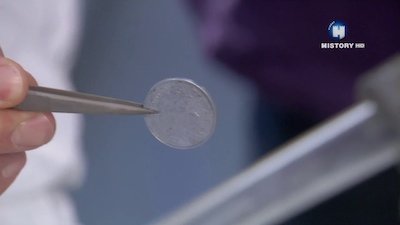
Forbidden History Season 3 Episode 3 The Real Holy Grail
- TV-PG
- April 26, 2015
- 44 min
-
6.3 (26)
In season 3, episode 3 of Forbidden History titled "The Real Holy Grail," host Jamie Theakston takes us on a journey to uncover the truth about the fabled Holy Grail. For centuries, the quest for the Holy Grail has captured the imagination of seekers of all faiths and backgrounds, sparking countless legends, myths, and conspiracy theories.
The episode begins by exploring the origins of the Holy Grail legend. As Theakston explains, the earliest references to the Grail can be found in medieval literature, where it was depicted as a sacred vessel used by Jesus Christ at the Last Supper. Over time, however, the Grail morphed into a symbol of mystical power, capable of granting its possessor eternal life, youth, or supreme knowledge.
To unravel the mystery of the Grail, Theakston meets with a range of experts, including historians, theologians, and archeologists. Together, they examine various artifacts and documents that may hold clues to the Grail's true nature and history.
One of the key items Theakston investigates is the so-called "Nanteos Cup," a medieval relic that some believe to be the true Holy Grail. The cup has been in the possession of the Powell family of Wales for generations and is said to have miraculous healing powers. However, its authenticity has been hotly debated, with some claiming that it is a forgery or a mere chalice with no connection to Jesus.
To shed light on the cup's origins, Theakston visits the University of South Wales, where he meets with archeology professor Martin Locock. Locock takes him on a tour of a nearby excavation site, where they uncover evidence of Celtic and Roman settlements that predate the birth of Christ. The implication is clear: if the Nanteos Cup is truly the Holy Grail, it must have been created long after Jesus's death, casting doubt on its supposed divine provenance.
Theakston also delves into the history of the Knights Templar, the legendary Christian order that some claim possessed secret knowledge or relics related to the Grail. He meets with historian Karen Ralls, who takes him to the Temple Church in London, where the Templars worshiped in the Middle Ages. There, they examine the famous "Effigy Tombs," which depict knights holding cups or chalices. Ralls argues that these tombs may hold hidden messages or clues related to the Grail, but the evidence is tenuous at best.
The episode also explores the Grail's spiritual significance, both in Christianity and other religions. Theakston visits the Church of the Holy Sepulchre in Jerusalem, where some believe the true Holy Grail is hidden somewhere in the basement. He also speaks with a range of scholars and theologians, including Rabbi David Rosen, who explain how the Grail has served as a potent symbol of mankind's yearning for the divine, regardless of creed.
Despite the lack of concrete evidence, Theakston concludes that the Grail remains a powerful icon of myth and mystery, touching something deep within the human psyche. Whether it exists in reality or only in the human imagination, the Grail continues to inspire awe, wonder, and questing, rendering it a fascinating subject for historians, archeologists, and spiritual seekers alike.
